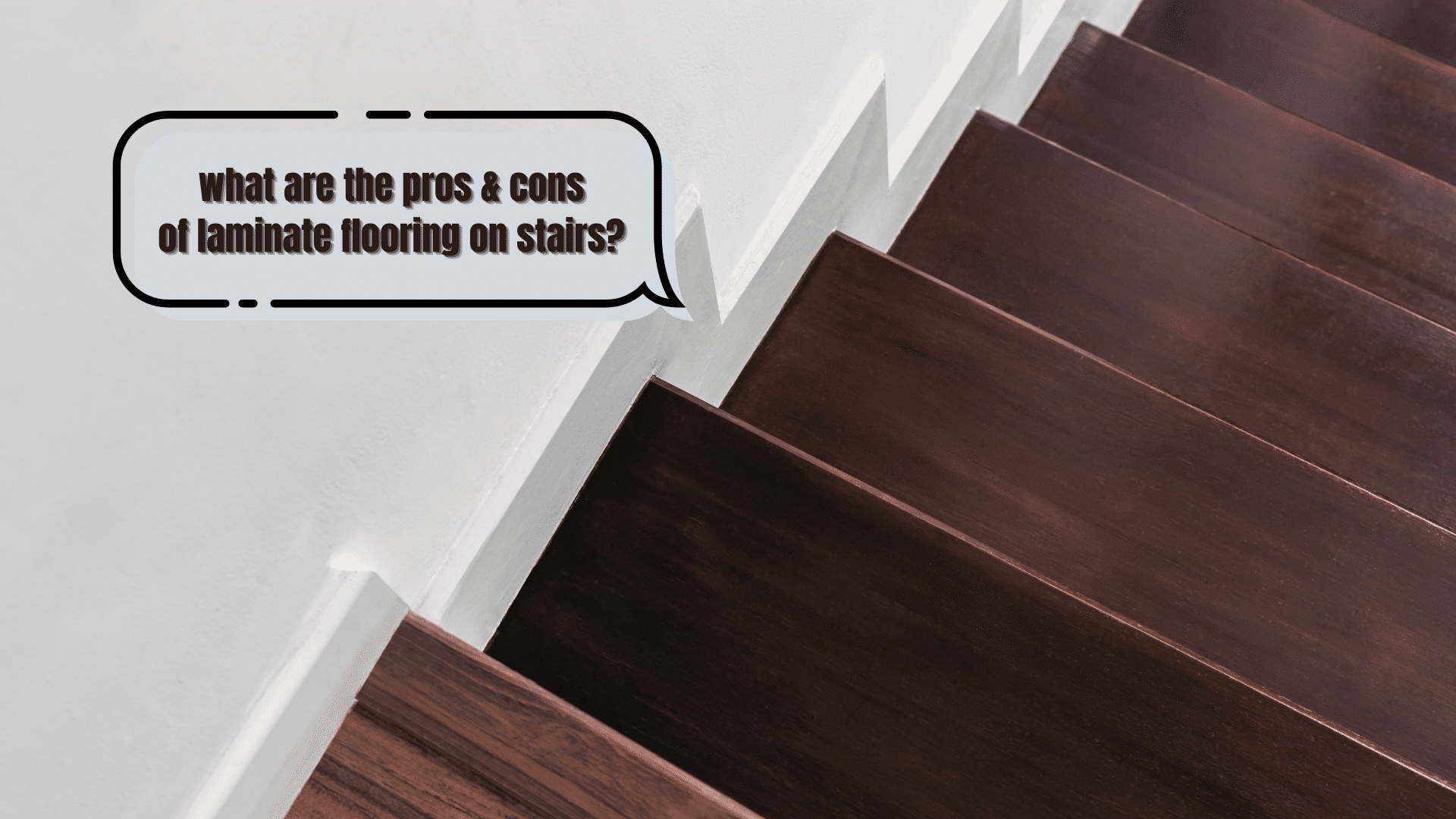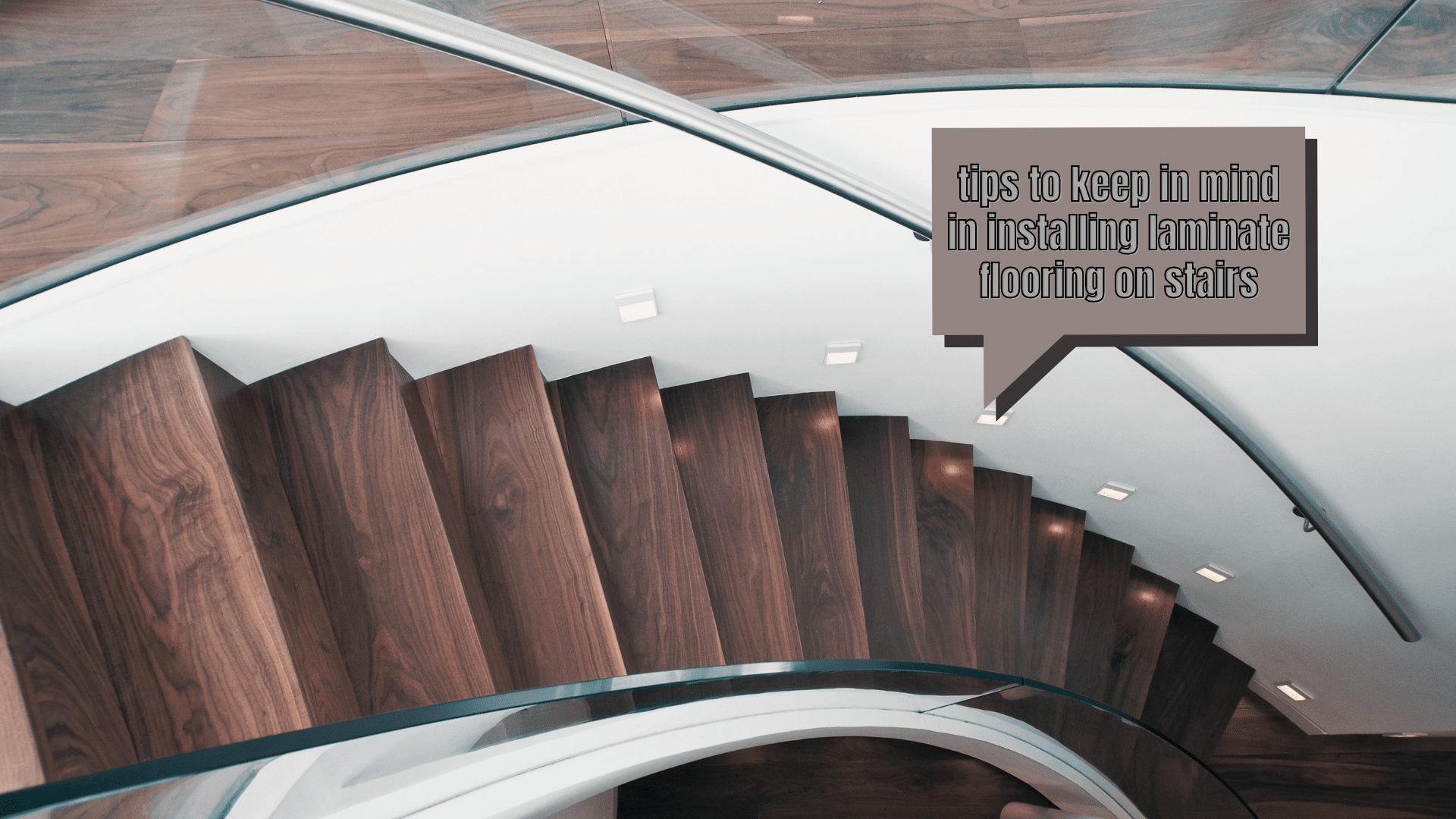Are you planning to jump on the trend of installing laminate on your staircase? Well, installing laminate planks on virtually every surface, including staircases, has been a growing trend for quite some time now. But the question is: are they the best choice for your stairway flooring needs?
Long story short, laminate floorboards can be effectively installed on your stairs even without nose stripping. It also provides a smooth, seamless transition from the upper to the lower floor.
Additionally, laminate flooring planks are a cost-effective solution starting from $17 to $28.5 per square foot (for materials and professional installation).
Can You Put Laminate Flooring on the Stairs?
Yes. As previously mentioned, laminate flooring planks continue to be the go-to flooring type for standard staircases.
Given that stairways are high-traffic areas, laminate material proves to be an excellent choice given its durability and longevity. Moreover, laminate floors also have a design layer that effectively mimics different flooring types' appearance.
Most laminate planks are known to have a smooth, slippery surface– which can put you at risk of accidental slips and falls. That said, you may want to choose textured laminate floors with a rougher surface and better traction. It’s also recommended to cover the front edges of the stair treads with stair nose stripping.
Suppose you already have purchased the laminate planks. In that case, you will need to acclimatize then to the temperature and humidity conditions of the stairway.
Doing so prevents any warping problems in the long run– which can be caused by the laminate’s swelling and shrinking. Let your laminate planks sit by the staircase for 72 hours before you start the installation.
Laminate Flooring on Stairs: An Overview of the Installation Process
Since laminate flooring doesn't have a structural value of its own, you can think of it as a covering for your existing stairs (as long as they are in good condition).
Standard stair treads usually measure 11 inches deep, and a laminate plank only measures 7 inches wide. You will need to fit two planks together in most cases, creating a seam in the tread's center.
Pro tip: To avoid this, buy 1-piece laminate stair treads from local laminate dealers near you.
Once you trim the treads to fit your stairs, you will need construction adhesive to glue them down. This means you may not be able to install an underlayment. After gluing the material, you may either nail the planks to the steps or screw them in place. Next, choose a floor putty with your laminate stair treads similar to fill the holes.
2 Options for Installing Laminate on Stairs
Generally, you have two options to install laminate flooring on your stairs.
If you want to opt for professional installation, it's best to collect estimates from different local installers to find the best deal for your budget.

Advantages of Installing Laminate on Stairs
Now, let's discuss why laminate floors are a great option when installed on stairs. It has easy installation, low maintenance, and cleaning requirements, to name a few benefits.
Disadvantages of Installing Laminate on Stairs
Like other flooring materials, laminate planks also present drawbacks. This includes poor noise-dampening features and an inability for refurbishing.
How to Prepare for a Laminate Stair Installation
Laminate floors can be installed on stairs made of wood or plywood, except on concrete– given it's not recommended to drive nails and screws into it. Ensure that the wood is even and level. Some homeowners may need to prepare their stairs accordingly by sanding them. Remove any old adhesive, staples, or tack strips once you install laminate stair treads. (Related: How To Remove Laminate Flooring? A Step-by-step Guide)
If you notice an overhang on the treads, you may need to cut it off or use a riser material with similar thickness and depth. Regardless, the tread must ideally have a neat 90-degree angle without any overhang. This is to accommodate the stair nose adequately.
Omit any visible baseboard trim or molding. For homeowners who want the molding to remain, you can opt to reinstall it back in place. Atop the stairs, ensure to trim the wall baseboard to give space for the nosing.
Laminate Stair Installation: Tips to Keep in Mind

Here are some expert-backed tips to keep in mind as you proceed with your laminate stair installation project.
Should I Hire a Professional to Install Laminate Floors on the Stairs?
Laminate floor installation has been a famous DIY project for many homeowners. If you're a handy homeowner with confidence in your carpentry skills– you can try giving it a shot yourself.
However, if you're planning to install it on the stairs, you may want to hire a professional to handle the job. Remember that an improper/poor installation may lead to severe accidents in the long run.
Given stairs are more visible than the rest of the floor– ensuring quality work is also crucial. The flooring material needs to be trimmed to shape with a sharp blade, so an experienced professional should handle the job to avoid unwittingly chipping the surface.
